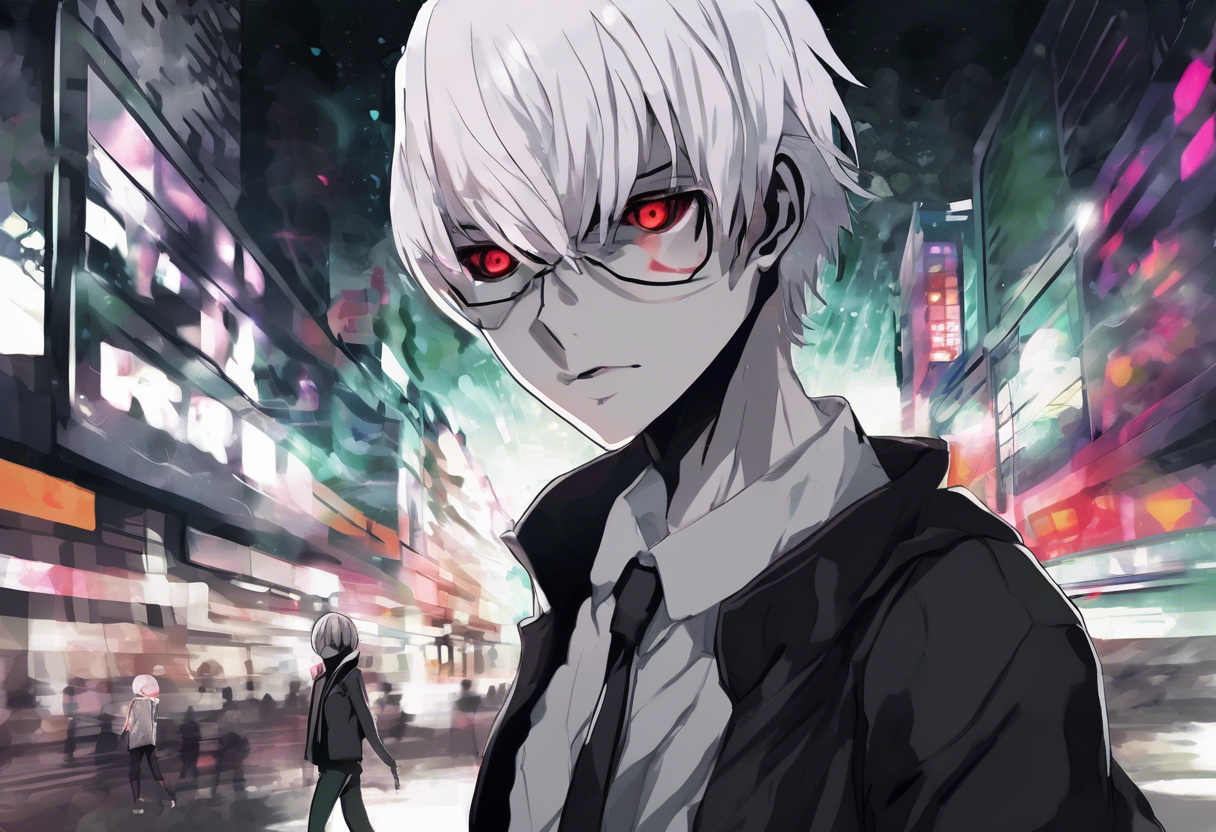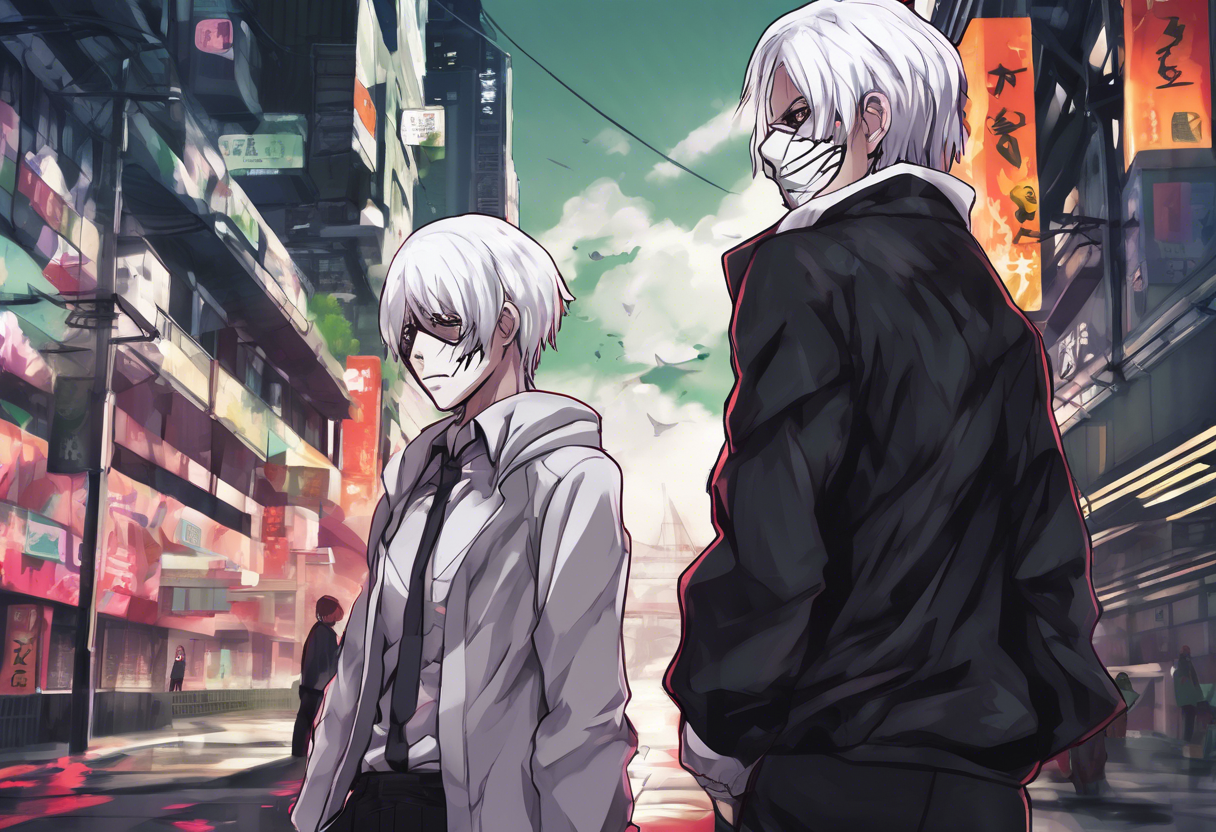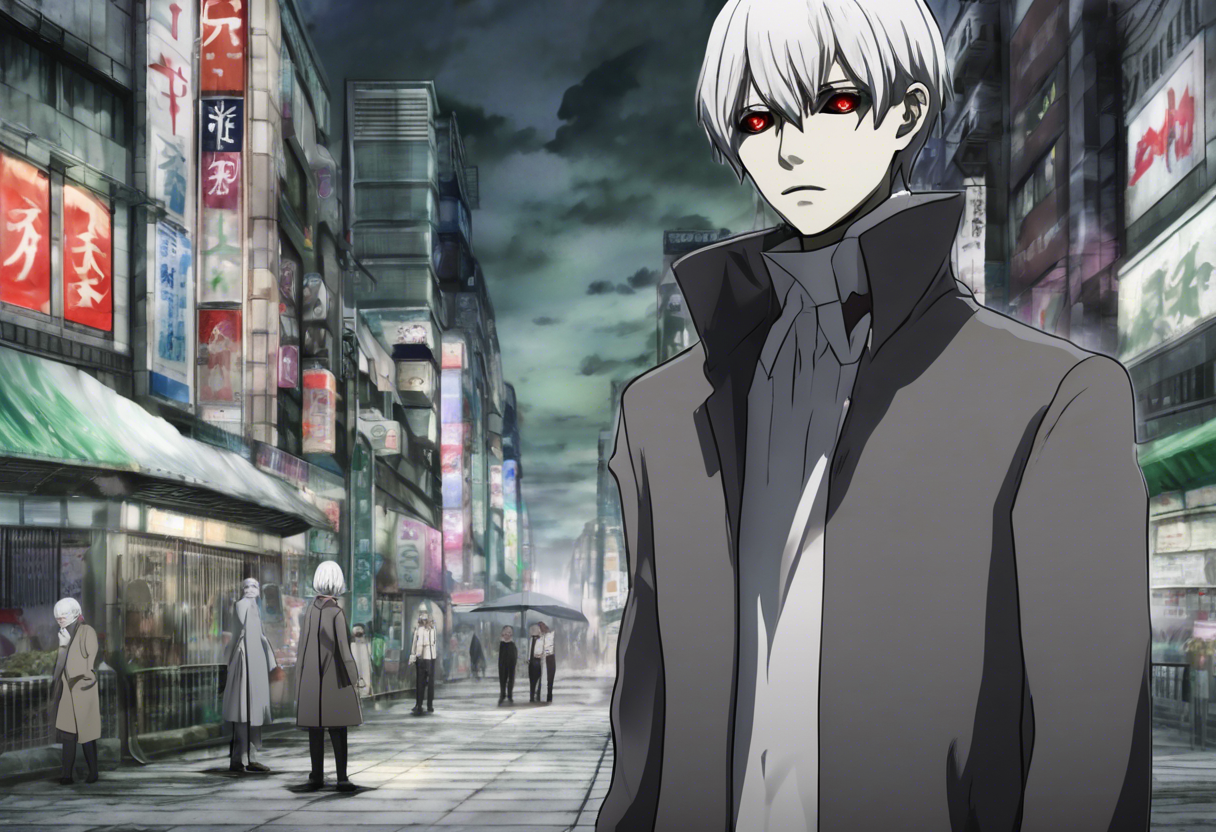Contents
Introduction
Tokyo Ghoul:re – Episode 47: ACT: Encounters is a pivotal episode in the second season of the anime series Tokyo Ghoul:re, which is a continuation of the original Tokyo Ghoul series. The episode is part of a larger narrative arc that delves into the complex world of ghouls and the Commission of Counter Ghoul (CCG) investigators. Produced by Pierrot, the anime is based on the manga by Sui Ishida and directed by Odahiro Watanabe, with scripts written by Chūji Mikasano and others.
The episode was initially released in 2018 as part of the anime’s second season, which aired from October 2018 to December 2018. What sets Tokyo Ghoul:re apart within its genre is its deep exploration of themes such as identity, morality, and the blurred lines between good and evil. The series is known for its intricate character development and the emotional depth it brings to the narrative.
Plot Summary
Episode 47: ACT: Encounters is a culmination of several plot threads that have been developing throughout the series. The episode begins with the ongoing conflict between the CCG and the ghouls, particularly focusing on the Quinx Squad, a group of half-human, half-ghoul investigators. Ken Kaneki, now known as Haise Sasaki, is a central figure in this conflict. Sasaki, who has lost his memories of being Kaneki, is struggling with his dual identity and his role within the CCG.
Tsukiyama, a powerful and eccentric ghoul, has been attempting to restore Sasaki’s memories of his past life as Kaneki. Along with his associate Kanae, Tsukiyama orchestrates various encounters to jog Sasaki’s memory, but these attempts are met with failure. Meanwhile, the Quinx Squad is preparing for the Rose Investigation, a mission aimed at infiltrating and gathering intelligence on ghoul organizations by impersonating ghouls themselves. This plan is met with skepticism by some members, particularly Kori Ui, who is aware of Sasaki’s true nature as a ghoul[3].
The episode intensifies as various factions clash. Kijima’s brutal video of torturing Yuuma goes viral, provoking the Rose gang and escalating tensions. In an effort to isolate Sasaki and make him remember his past, Kanae bribes some Aogiri members to attack the Quinx Squad. However, this plan goes awry when Yamori’s old gang accidentally attacks Sasaki instead. This leads to a chaotic battle where Sasaki is forced to defend himself and his squad members against multiple ghoul attackers.
During this battle, Mutsuki engages with Torso but is attacked by the ghoul Grave Robber. Sasaki intervenes, using his kagune to kill the attackers and protect his team. The scene is witnessed by Eto, who observes the entire ordeal. In a critical moment, Saiko is almost killed but is saved by Amon Kotaru, who is revealed to be alive[3].
The helicopter escape planned by Tsukiyama’s group adds another layer of complexity to the narrative. The CCG’s goal is to exterminate the ghouls inside the Luna Eclipse, while Tsukiyama’s group aims to help key ghouls escape. This dual objective creates a tense standoff between the two factions[1].
As the episode progresses, the narrative delves deeper into the emotional and psychological struggles of the characters. Sasaki’s identity crisis is a central theme, as he grapples with his past and present selves. The relationships between characters, such as the bond between Tsukiyama and Kaneki, and the camaraderie within the Quinx Squad, are also highlighted.
The setting of the episode is predominantly urban, with the cityscape serving as a backdrop for the intense battles and emotional confrontations. The Luna Eclipse, a significant location, becomes a focal point for the conflict between the CCG and the ghouls.
The central conflicts of the episode revolve around identity, loyalty, and survival. Sasaki’s struggle to remember his past and reconcile his dual identities is a personal conflict that mirrors the larger societal conflict between humans and ghouls. The episode also explores themes of friendship and sacrifice, as characters risk their lives to protect one another.
Themes and Symbolism
Tokyo Ghoul:re – Episode 47: ACT: Encounters is rich in themes and symbolic elements that enhance its storytelling and resonance with audiences. One of the central themes is the exploration of identity and how it shapes an individual’s actions and perceptions. Sasaki’s journey is a metaphor for the search for self and the complexities of dual identities.
The use of masks is a significant symbolic element. The Quinx Squad’s plan to wear masks to impersonate ghouls symbolizes the blurring of lines between humans and ghouls, highlighting the theme of identity and deception. This also reflects the societal pressure to conform and hide one’s true nature[3].
The character of Tsukiyama serves as a symbol of obsession and the lengths to which one will go to restore what they perceive as lost. His attempts to make Sasaki remember his past life as Kaneki are driven by a deep emotional connection and a desire to reclaim a lost friendship.
The episode also explores the theme of morality, questioning what it means to be good or evil in a world where these distinctions are not clear-cut. The CCG’s mission to exterminate ghouls is juxtaposed with the ghouls’ fight for survival, raising questions about the nature of justice and the value of life.
Cultural Impact
Tokyo Ghoul:re – Episode 47: ACT: Encounters has had a significant cultural impact, particularly within the anime and manga community. The episode’s release was highly anticipated and received substantial attention from fans and critics alike.
The series has influenced popular culture, with references to its themes and characters appearing in other anime and manga works. The complex characters and moral ambiguities presented in Tokyo Ghoul:re have set a new standard for storytelling in the genre.
Critical Reception
The critical reception of Tokyo Ghoul:re – Episode 47: ACT: Encounters was generally positive, with praise for its intense action sequences, emotional depth, and complex character development. Critics noted the episode’s ability to balance multiple plot threads and deliver a cohesive narrative.
However, some critics pointed out pacing issues and the overwhelming number of characters, which could make the episode challenging to follow for new viewers. Despite these criticisms, the episode was well-received for its contribution to the overall narrative arc of the series[5].
Legacy
Tokyo Ghoul:re – Episode 47: ACT: Encounters continues to be a significant part of anime history, inspiring filmmakers, artists, and audiences. The episode’s exploration of complex themes and its emotional resonance have made it a standout in the genre.
The series as a whole has left a lasting impact on the anime community, influencing future works with its unique blend of action, drama, and philosophical themes. The enduring relevance of Tokyo Ghoul:re – Episode 47: ACT: Encounters lies in its ability to engage audiences on a deep emotional level, making it a memorable and impactful episode in the series.
References
- https://tokyoghoul.fandom.com/wiki/Re:_Chapter_47
- https://www.imdb.com/title/tt8994428/
- https://en.wikipedia.org/wiki/Tokyo_Ghoul:re_(TV_series)
- https://tokyoghoul.fandom.com/wiki/Story_Arcs
- https://aminoapps.com/c/ghoul/page/blog/tokyo-ghoul-re-episode-23-review-act-encounters/QKNM_o0rhXu3kJe8VjEQzw1GejMKWRYw7Vd







